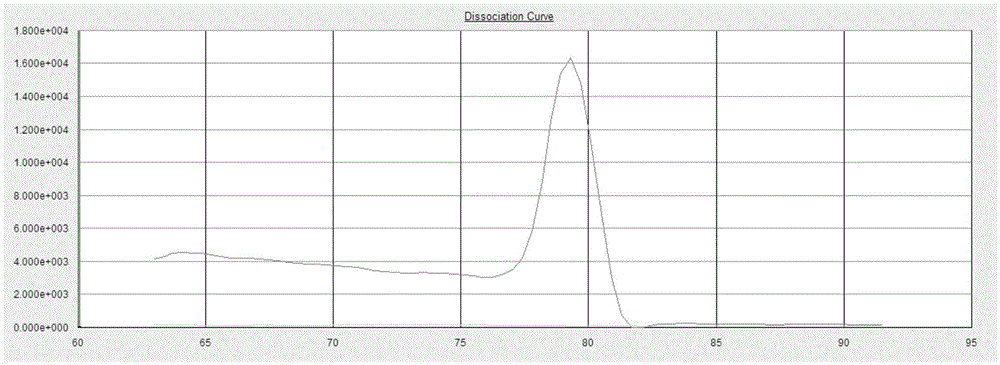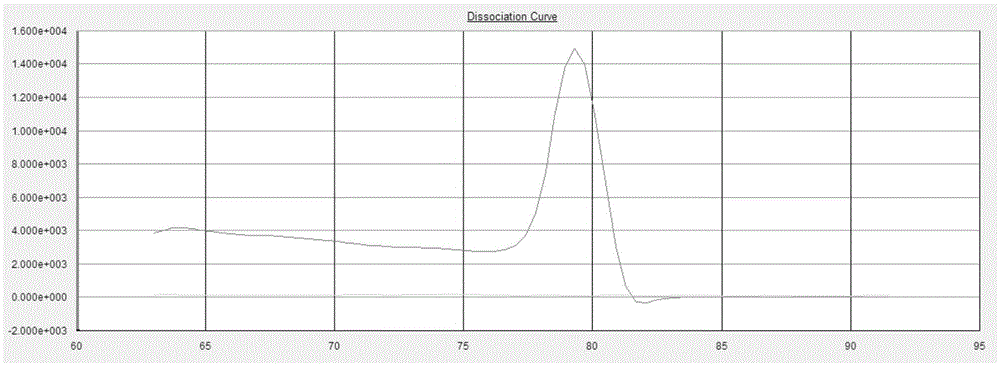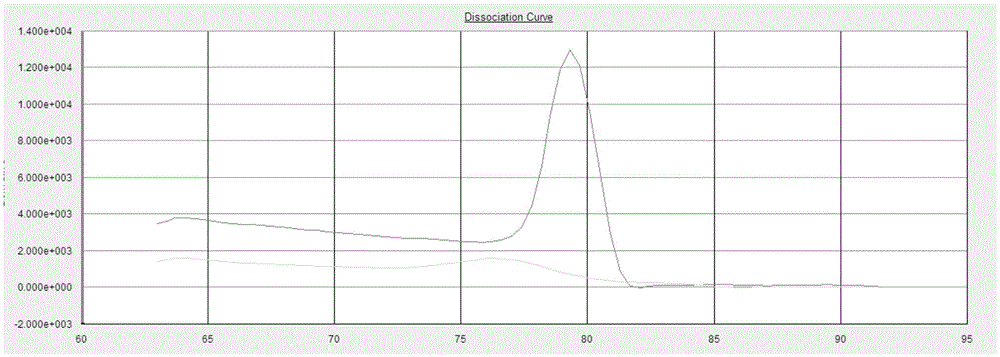Fluorescent constant-temperature amplification technique
A fluorescence constant temperature amplification and constant temperature amplification technology is applied in the field of fluorescence constant temperature amplification technology that does not depend on high-energy energy molecules, and can solve the problem of limited amplification speed, supply of energy, high cost of constant temperature amplification technology, and increased instrumentation. Problems such as development cost, to achieve the effect of simple composition, good amplification effect, and stable amplification speed
- Summary
- Abstract
- Description
- Claims
- Application Information
AI Technical Summary
Problems solved by technology
Method used
Image
Examples
Embodiment 1
[0087] The specific components of the recombinase-dependent constant temperature amplification reaction reagent are as follows:
[0088] Tris-H 2 SO 4 (pH7.4) 10mM
[0090] Magnesium acetate 14mM
[0091] Dithiothreitol 5mM
[0092] Betaine 0.8M
[0093] DMSO5%
[0094] Trehalose 3%
[0095] PEG5%
[0096] BSA0.1mg / mL
[0097] dNTPs200uM
[0098] Polymerase Bsu5U
[0099] Single-chain binding protein 250ng / ul
[0100] Recombinase (λ phage β protein) 120ng / ul.
Embodiment 2
[0102] The specific components of the recombinase-dependent constant temperature amplification reaction reagent are as follows:
[0103] Tris-acetic acid (pH8.0) 50mM
[0104] Magnesium acetate 14mM
[0105] Betaine 0.5M
[0106] Tween200.34%
[0107] DMSO5%
[0108] Dithiothreitol 4mM
[0109] PEG8%
[0110] BSA0.1mg / mL
[0111] dNTPs200uM
[0112] Polymerase klenow50ng / ul
[0113] Single chain binding protein 350ng / ul
[0114] Recombinase (STPα) 100ng / ul.
Embodiment 3
[0116] The specific components of the recombinase-dependent constant temperature amplification reaction reagent are as follows:
[0117] Tris-HCl (pH8.3) 50mM
[0118] KCl60mM
[0119] Magnesium acetate 10mM
[0120] Dithiothreitol 2mM
[0121] Betaine 1M
[0122] Trehalose 5.5%
[0123] PEG5.5%
[0124] BSA0.1mg / mL
[0125] dNTPs200uM
[0126] Polymerase Bsu50U
[0127] Single-chain binding protein 262ng / ul
[0128] Recombinase (E.coliRecT) 360ng / ul.
PUM
 Login to View More
Login to View More Abstract
Description
Claims
Application Information
 Login to View More
Login to View More - R&D
- Intellectual Property
- Life Sciences
- Materials
- Tech Scout
- Unparalleled Data Quality
- Higher Quality Content
- 60% Fewer Hallucinations
Browse by: Latest US Patents, China's latest patents, Technical Efficacy Thesaurus, Application Domain, Technology Topic, Popular Technical Reports.
© 2025 PatSnap. All rights reserved.Legal|Privacy policy|Modern Slavery Act Transparency Statement|Sitemap|About US| Contact US: help@patsnap.com



